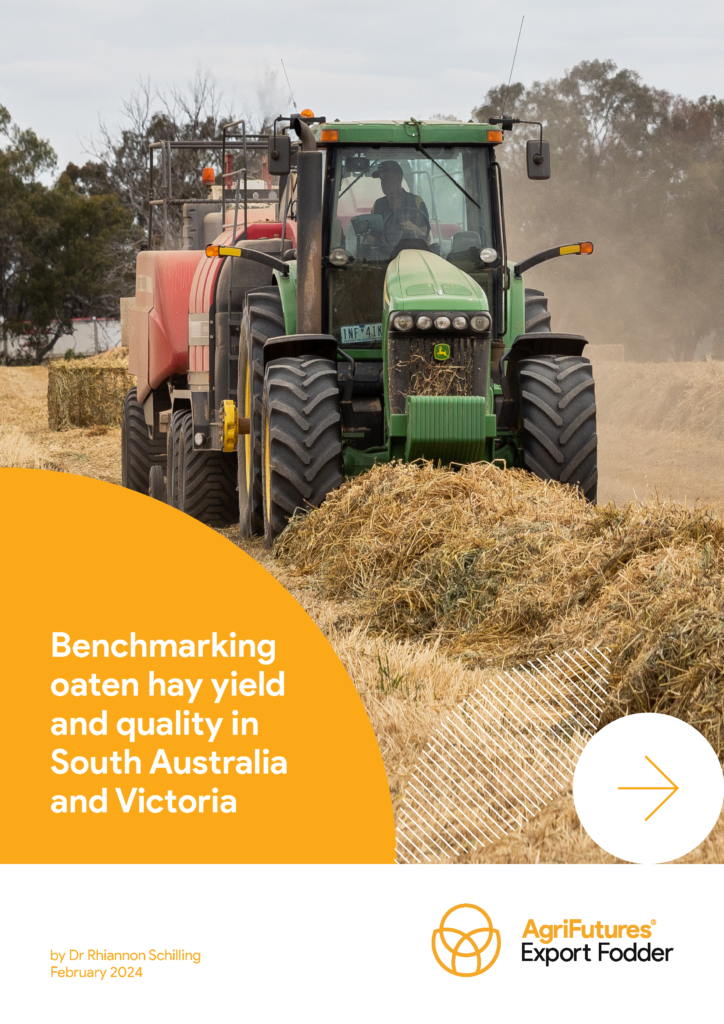The Australian export fodder industry is well established, having supplied fodder to countries across the world for some 30 years. About 38,000 properties are involved in the commercial production of fodder crops annually, with an estimated 1,500-2,000 growers involved in production for export.
A key priority of the AgriFutures Export Fodder Program Strategic RD&E Plan (2021-2026) is to invest in the understanding and application of agronomy best management practices that deliver increased yield and/or quality. As part of a one-year study using field trial sites at Tarlee and Hart in South Australia, and Nullawil in Victoria, researchers investigated how the latest oaten hay varieties perform across different environments. The team also studied changes in oaten hay quality traits across two growth stages, and the influence of sampling techniques on hay quality outcomes measured from field trial plots.
The oaten hay varieties Kingbale, Kultarr, Mulgara, Wallaby and Wintaroo were found to yield highest for hay across the three sites. For producers operating in similar environments, the findings suggest these varieties are most suitable for optimising hay yields in an above-average-rainfall year.
Hay cut at the later growth stage of Z71 was associated with higher biomass, taller plants and thicker stems, but reduced quality traits, compared to hay cut at Z61. This finding requires further investigation, and both genetic improvement relating to hay yield potential and agronomic management strategies are required to enable increased biomass without compromising hay quality.
Sampling technique investigations determined that researchers undertaking hay cuts in field trials should cut their samples between 9am and 2pm. This will help to avoid cutting in the late afternoon, which was associated with measured changes for quality traits. Additionally, hay samples, once cut, should be placed in the oven for drying for a consistent length of time – for all samples and across all trials, no later than 8.5 hours after cutting. In this study, placing hay samples in the oven 24 hours after they were cut impacted some quality traits,
The independent hay yield and quality data generated in this project can be used to help guide variety choice in similar environments, although caution is needed given the results are based on only one year. Oaten hay producers should continue considering other factors, including time of sowing, fertiliser requirements, past paddock rotations, weed, pest and disease management, and market demand, when determining the choice of oaten hay variety most suitable for them.





